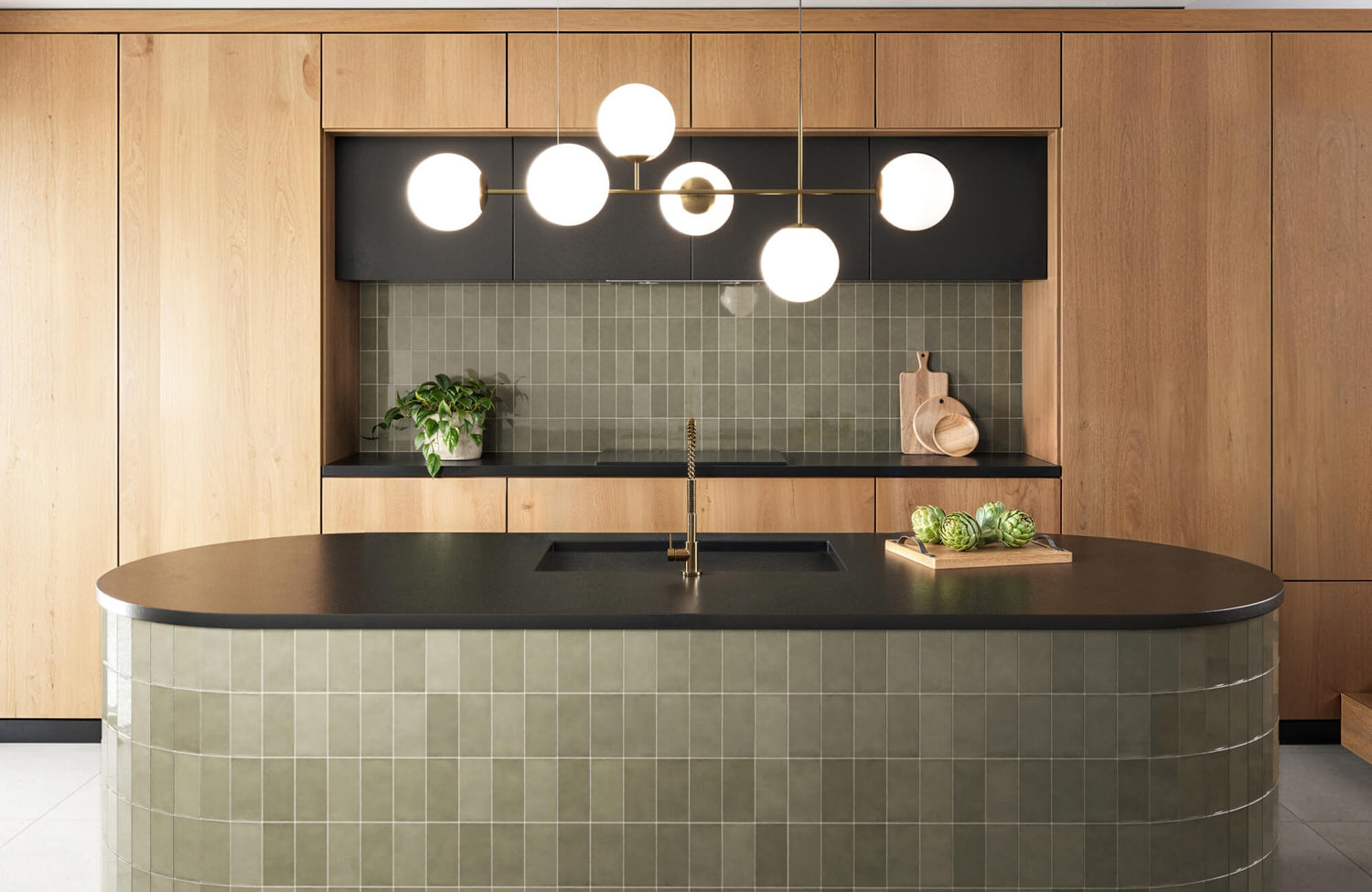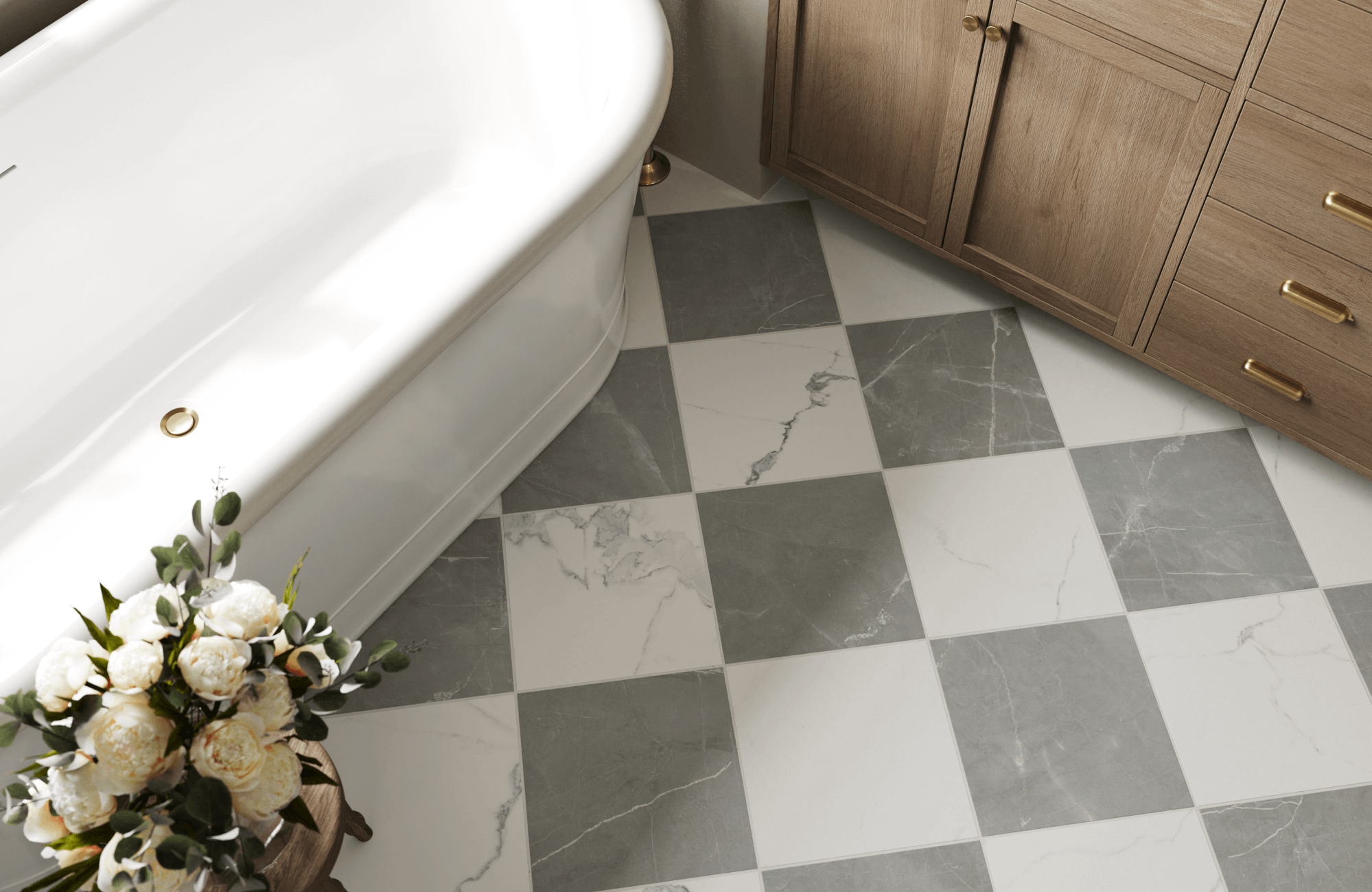Subway tiles, often called metro tiles, have long been a favorite in both kitchens and bathrooms. Recognized for their clean, rectangular shape, typically 3x6 inches, they offer a classic look that works well in nearly any interior style. Still, like any design choice, subway tiles have their share of pros and cons. In this guide, we’ll explore their strengths and limitations to help you decide whether they’re the right fit for your next project.

Advantages of Subway Tiles
Subway tiles have remained a go-to design choice for over a century and for good reason. Their classic appeal, practical benefits, and design flexibility make them a smart option in both modern and traditional interiors. Below, we break down the top reasons why these iconic tiles continue to stand the test of time.
Evergreen Charm
Subway tiles are a timeless staple in interior design. Their clean lines and simple rectangular shape pair effortlessly with nearly any style, from historic homes to contemporary spaces. This universal appeal makes them a safe yet stylish backdrop that won’t fall out of fashion. Whether you’re updating a kitchen or bathroom, they help tie the room together with understated charm.
Their history also plays a role in their enduring popularity. Originally used in early 1900s New York subway stations, these tiles were chosen for their hygienic, easy-to-clean surface and that legacy of both form and function carries into today’s interiors. Their classic feel evokes familiarity, while still leaving room for personalized styling.
Luminous and Reflective Quality
One of the biggest advantages of subway tiles is their ability to brighten up a space. Their glossy, glazed surface, as seen with our Jaden 2.5x16 Glossy Ceramic Tile in Dove above, reflects natural and artificial light, making rooms feel more open and airy. This quality is especially useful in smaller or darker areas where every bit of brightness counts. It’s a subtle way to enhance both mood and visual space without major renovations.
In addition to the visual benefits, this light reflection can support energy efficiency by reducing the need for overhead lighting during the day. Especially in kitchens or bathrooms with limited windows, high-gloss subway tiles help bounce daylight around the room, giving your space a fresh, polished appearance even in lower lighting conditions.
Diverse Color Options
Subway tiles are available in a wide range of colors, allowing you to match your palette perfectly. From timeless white and soft neutrals to bold hues like emerald or navy, there's a shade for every mood and aesthetic. If you're unsure which color suits your space best, try out our augmented reality (AR) tool to preview your choices in real time. It's a simple way to find the right fit without the guesswork.
Color also plays a big role in setting the tone of a room. Lighter shades can help create a serene, spa-like vibe, while darker or saturated tones add depth and drama. Some homeowners even mix two shades in a pattern for a more graphic, custom look. The flexibility in hue means subway tiles can serve as a quiet backdrop or a vibrant focal point.
Expansive Dimensional Varieties
While the standard 3x6 tile remains popular, today’s subway tiles come in many different sizes and proportions. You’ll find elongated, square, and even mini versions that help tailor the look to your specific space. Larger tiles can create a bold, modern statement, while smaller ones add subtle texture and charm. This variety offers plenty of room for creativity when planning your layout.
Changing the scale of the tile can dramatically alter the feel of a room. Long, slim tiles add vertical or horizontal movement depending on how they're placed, while short, stacked versions create clean, rhythmic lines. These dimensional options make it easier to find a tile that not only fits the style of the room but enhances its proportions too.
Cost-Effective
Subway tiles are a budget-friendly way to upgrade your interiors. They offer a refined look without the premium price tag often associated with natural stone or custom finishes. Whether you’re renovating an entire bathroom or adding a backsplash, their affordability makes it easier to stay on budget. It’s a great balance of quality, style, and value.
Many ceramic subway tiles are also widely available, which helps keep installation costs reasonable. Since they’re a familiar material for installers, labor is often more efficient compared to more complex materials or layouts. This makes subway tiles a practical choice for both DIYers and professionals managing full remodels.
Ease of Maintenance
These tiles are as practical as they are attractive. Made from glazed ceramic or porcelain, their smooth surface resists stains and is easy to wipe clean. In areas like kitchens and bathrooms where messes are common, a quick wipe-down is all it takes to maintain their shine. They’re ideal for busy households that need surfaces to look good with minimal upkeep.
Because of their water-resistant properties, subway tiles are also ideal for wet zones like showers, backsplashes, and around sinks. They don't absorb moisture or harbor bacteria, making them a hygienic and durable solution for busy areas. With proper installation and sealing, they can retain their fresh appearance for years.
Versatile Layout Designs
Subway tiles aren’t limited to the classic brick pattern; they can be styled in many creative ways. Popular alternatives include the herringbone, basketweave, and stacked layouts, each offering its own distinct look. These design options allow you to personalize your space while still working within a classic framework. With so many ways to lay them out, you can make subway tiles feel truly custom.
The layout you choose can influence the perception of space as well. Vertical stacks can elongate walls, making ceilings feel taller, while diagonal herringbone adds movement and texture. Whether you're after a traditional or modern aesthetic, layout experimentation is one of the easiest ways to elevate the final design.

Disadvantages of Subway Tiles
While subway tiles have earned their place as a design favorite, they do come with a few trade-offs worth considering. Understanding these potential drawbacks can help you decide whether they’re the right choice for your space and lifestyle. Let’s take a closer look at the common challenges that may come with using subway tiles.
Grout Maintenance
One of the more common concerns with subway tiles is grout upkeep. Because each tile requires spacing, there are more grout lines to clean and maintain over time. These lines can be prone to discoloration, mold, or staining, especially in moisture-prone areas like kitchens and bathrooms. Using a high-quality grout and sealing it properly can help, but regular cleaning is still essential to keep everything looking fresh.
Installation Demands
Achieving a clean, professional finish with subway tiles can be more challenging than it seems. Their smaller size means more pieces to align, making it easier to notice any uneven spacing or crooked lines. Precision is key, and minor mistakes during installation can quickly become obvious once grout is applied. For the best results, especially in high-visibility areas, it's a smart move to hire a professional.
Prone to Chipping
Standard ceramic subway tiles often feature a glazed finish that can chip when exposed to sharp impact. This is more of a concern around high-contact zones like kitchen counters or shower shelves, where daily wear and tear is common. While small chips can sometimes be touched up with repair kits, larger damage might require tile replacement. Choosing a high-quality tile and handling it carefully during installation helps minimize the risk.

Best Places to Feature Subway Tiles
Subway tiles are more than a design classic they’re a flexible tool for adding structure, shine, and character to your interiors. Whether you're working with a compact apartment or a sprawling family home, these tiles can adapt to nearly any setting. Below are some standout spaces where subway tiles aren’t just practical, they’re transformative.
Kitchen Backsplashes
Behind every sink and stovetop is a space that works hard and deserves to look good doing it. Subway tiles make a perfect splash zone shield thanks to their easy-to-clean surface and layout flexibility. Go glossy to bounce light around the room, or try unexpected colors like forest green or terracotta to give your kitchen personality without sacrificing simplicity.
But don’t stop at the basics. Play with layout, think vertical stacks or diagonal patterns to turn a practical element into a design feature. Pairing classic white tiles with dark grout is always timeless, but color-blocking or even tonal gradients can give your kitchen a modern refresh that still respects the classics.
Bathroom Walls and Shower Niches
There’s nothing more calming than a shower lined in smooth, clean tile, and subway tiles deliver that feeling with ease. Their sleek glazed surface stands up well to steam and moisture, making them ideal for full bathroom walls, shower enclosures, or cozy bathtub surrounds. As seen above with our Maisie 2.5x16 Glossy Ceramic Tile in Pistachio, these tiles bring a gentle, refreshing tone that instantly soothes the eye.
Want to go a step further? Use subway tiles to define shower niches or frame mirrors for a more tailored look. Even in a compact bathroom, this kind of detailing introduces architectural polish without overpowering the space. Try running the tiles vertically for a subtle lift or mix in textured pieces for quiet contrast.
Fireplace Surrounds
For a clean and contemporary look, subway tiles are a great option around fireplaces as well. Whether you prefer matte finishes for a softer feel or glossy tiles for a sleek highlight, they bring a polished edge without overwhelming the hearth. Try beveled edges or dark grout lines for added dimension and contrast. It’s a subtle way to update your living space while keeping the focus on warmth and comfort.
Subway tiles can also serve as a neutral frame for bold mantel decor or patterned floor tile nearby. Because they’re available in so many sizes and shades, it’s easy to find a combination that blends seamlessly into your living area or stands out just enough to feel fresh.
Making the Most of Subway Tiles
Subway tiles have earned their place in both classic and modern interiors, offering a timeless look that’s easy to style and maintain. Their clean lines, flexible layouts, and wide range of finishes make them a favorite for kitchens, bathrooms, and beyond. Whether you're aiming for something traditional or more contemporary, there's a subway tile option to match your vision.
If you're still weighing your choices or need help narrowing down options, we’re here to assist. Our team can guide you through selecting the right tile size, color, and layout for your space. Contact us today to get personalized support for your next home update.
Frequently Asked Questions
To help you better understand the use and care of subway tiles, we’ve answered some of the most common questions we hear. Whether you're just exploring design options or planning your next tile installation, these quick insights can help guide your decisions.
Can subway tiles be used in outdoor settings?
Subway tiles are generally intended for indoor use, especially those made with a glazed finish. If you’re planning an outdoor project, be sure to choose tiles specifically rated for exterior conditions to ensure long-term durability.
Are subway tiles eco-friendly?
Some subway tiles are eco-friendly, particularly those made from recycled materials or produced through sustainable practices. Check product details or speak with your tile supplier to find options that align with environmentally conscious values.
How long do subway tiles last?
With proper installation and regular maintenance, subway tiles can last for decades. Their durability and timeless appeal make them a reliable option for long-term use in kitchens and bathrooms.
Can subway tiles be painted or refinished?
Yes, subway tiles can be painted to update their color or finish, especially if you want to refresh the look without replacing them. Just make sure to use tile-appropriate paint and follow the right prep steps so the finish lasts.
What is the best way to clean grout between subway tiles?
A gentle solution, like baking soda and water, works well for regular grout cleaning. For tougher stains, try a mild commercial grout cleaner or diluted vinegar solution—just be sure your tile type is compatible with these products.









